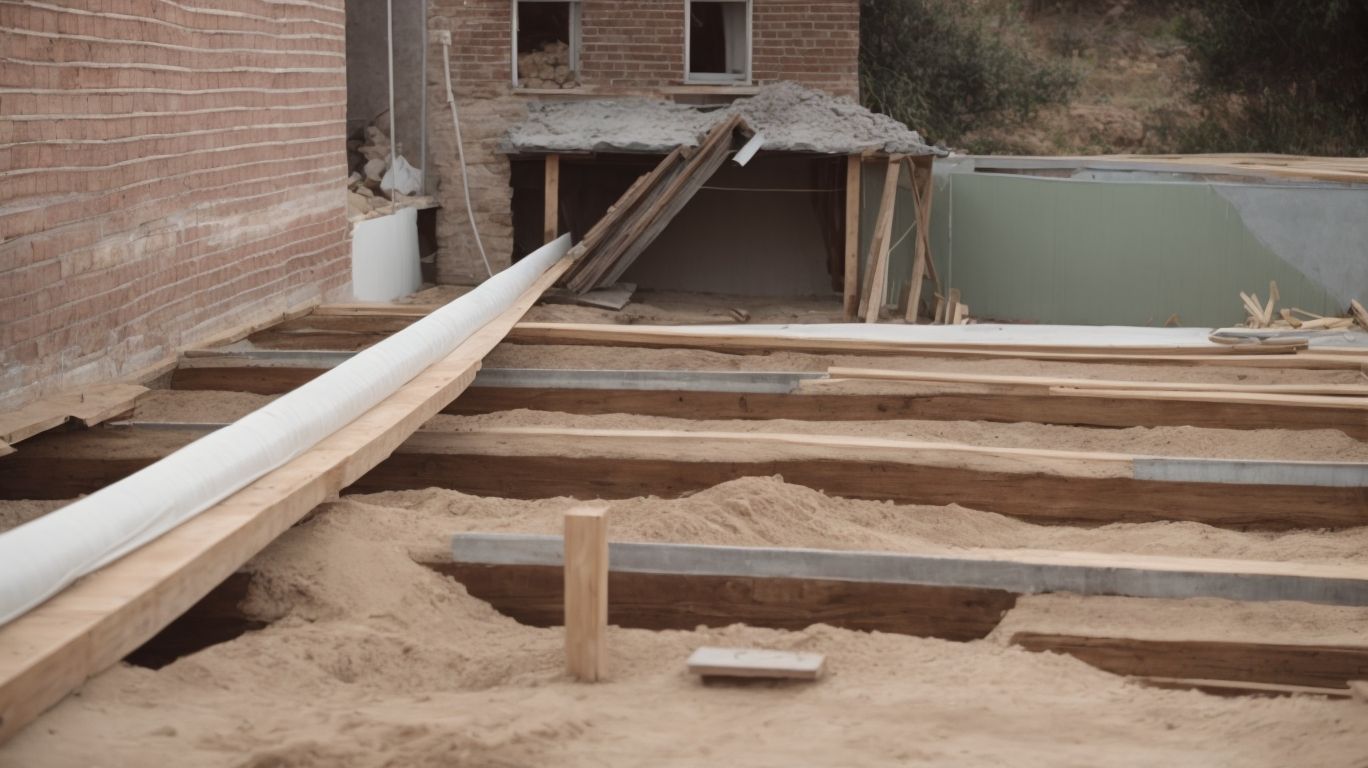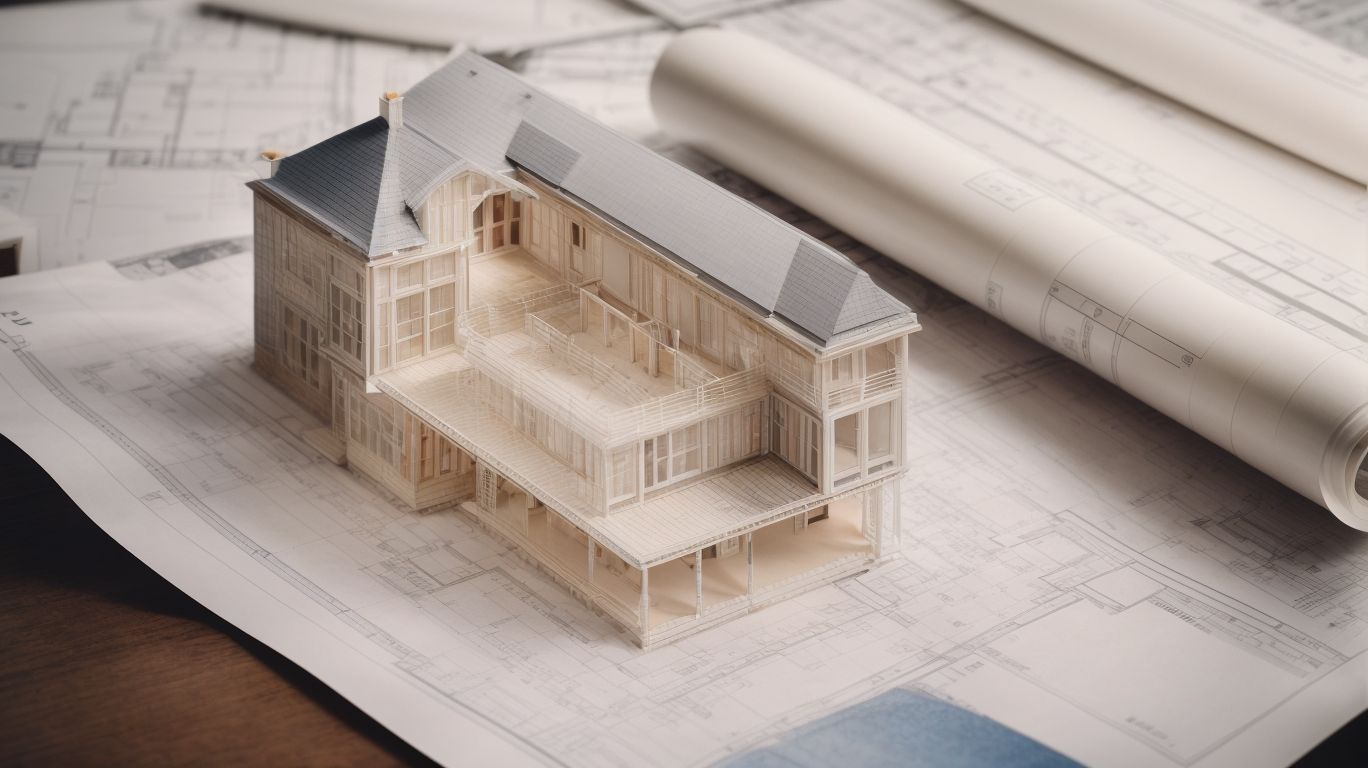
Foundation First: The Critical Step in Home Renovation
When it comes to home renovation, one of the most critical steps is ensuring that the foundation is in top condition. Neglecting the foundation can lead to a myriad of risks and costly repairs in the future.
In this comprehensive article, we will explore the importance of putting the foundation first in home renovation, the potential risks of neglecting it, and how to perform foundation first. We will also discuss the benefits of prioritizing the foundation and the different types of foundation available, helping you choose the right one for your home. So, let’s dive in and make sure your home renovation project starts on the right foot.
What Is Foundation First?
Foundation first refers to the initial stage of a home renovation project. This stage focuses on assessing, maintaining, and potentially repairing the property’s foundation.
This stage is crucial as the foundation serves as the building block of the entire structure. It supports the weight of the house and ensures its stability. Addressing any issues with the foundation early in the renovation process can prevent further structural damage and costly repairs down the line.
It provides a solid base for subsequent renovations, such as additions or interior modifications. This ensures that the entire project is built on a secure and sound foundation. Therefore, prioritizing the foundation first in any home renovation is essential for the long-term durability and safety of the property.
Why Is Foundation First Important in Home Renovation?
The foundation holds paramount importance in home renovation as it forms the base on which the entire construction and building stability rely.
The foundation also plays a crucial role in supporting the weight of the structure and ensuring that it is properly distributed, which is essential for maintaining the integrity of the building.
When renovating a home, it’s vital to assess the condition of the existing foundation and make any necessary repairs or reinforcements to ensure the stability and longevity of the structure.
The type of construction materials used for the foundation, such as concrete, steel, or wood, also significantly impact its durability and resilience against environmental factors. This underscores the imperative of choosing high-quality materials and construction techniques to ensure a solid and enduring foundation.
What Are The Risks of Neglecting Foundation First?
Neglecting the foundation first in a home renovation can lead to severe consequences, including foundation problems, compromised structural integrity, and increased maintenance issues.
This oversight can result in a range of structural issues, such as tilting or cracking walls, sloping floors, and misaligned doors and windows.
Foundation neglect can lead to significant long-term financial burdens, as the cost of repairing foundation damage often far exceeds the expenses of routine maintenance.
It’s crucial to prioritize foundation inspections and repairs during renovations to ensure the long-term stability and safety of the property.
How To Perform Foundation First?
Performing foundation first in a renovation project involves a meticulous process of foundation inspection, evaluation of repair costs, and strategic planning for necessary interventions.
This approach ensures that the structural integrity of the building is secured before focusing on aesthetic enhancements.
The first step is a comprehensive examination of the foundation to identify any underlying issues such as cracks, settling, or water damage. Once the assessment is complete, a detailed cost analysis is conducted to estimate the expenses involved in addressing the foundation problems.
Subsequently, a strategic renovation plan is devised, prioritizing the foundation repairs to create a stable and durable base for the overall renovation project.
Inspect and Assess the Current Foundation
The first step in performing foundation inspection is to thoroughly inspect and assess the current foundation. This includes conducting comprehensive soil testing and establishing a clear renovation timeline.
This inspection process is vital as it provides insights into the soil condition. This includes its load-bearing capacity and potential for settlement. Through soil testing, engineers can determine the appropriate footing and foundation design that suits the specific soil composition.
Establishing a renovation timeline is crucial for coordinating various tasks such as excavation, foundation repair, and structural reinforcement. This ensures that the renovation progresses smoothly and efficiently.
Make Necessary Repairs and Reinforcements
Once the inspection is completed, the next step is to address any identified issues through necessary repairs and reinforcements, utilizing appropriate foundation materials and construction techniques.
This process begins with evaluating the type of foundation material needed based on the specific requirements of the building and the underlying soil conditions.
For instance, in the case of a concrete foundation, the repair may involve using high-quality concrete mixes and reinforcing steel bars. For wooden foundations, treatment with preservatives and sealants becomes crucial to enhance durability.
The chosen construction methods such as underpinning or slabjacking should be implemented meticulously to ensure stability and prevent future foundation problems. With the right materials and methods, the foundation can be restored to its optimal condition, ensuring the structural integrity of the building.
Waterproof the Foundation
Waterproofing the foundation is a crucial step in ensuring its longevity and stability. This involves implementing effective foundation drainage systems in line with renovation guidelines.
This process not only protects the structural integrity of the property but also safeguards it against potential water damage and moisture intrusion.
Proper drainage systems can prevent water accumulation around the foundation, reducing the risk of cracks, erosion, and other costly issues.
By adhering to renovation guidelines for foundation waterproofing and drainage, property owners can significantly enhance the resilience of their structures. This ultimately saves on maintenance costs and ensures a healthier living environment.
Strengthen Foundation for Future Renovations
Strengthening the foundation for future renovations involves obtaining necessary permits, restoring the foundation’s structural integrity, and adhering to renovation regulations for sustainable construction and renovation projects.
This comprehensive process typically starts with acquiring the essential permits from local authorities to ensure that the planned renovations comply with building codes and regulations.
Once the necessary paperwork is in place, attention turns to the restoration of the foundation’s structural elements. This may involve repairing cracks, reinforcing load-bearing walls, and addressing any underlying issues that could compromise the stability of the structure.
Compliance with renovation regulations is crucial for the long-term durability and safety of any construction or renovation project. This underscores the importance of professional expertise and meticulous attention to detail throughout the process.
What Are The Benefits of Foundation First?
Adhering to the foundation first approach in home renovation offers a multitude of benefits, including the preservation of property value, efficient management of the renovation budget, and strategic planning for comprehensive renovations.
Prioritizing the foundation ensures that structural issues are addressed upfront, preventing potential damage and preserving the overall property value.
Starting with the foundation allows for better budget management by addressing critical structural elements before proceeding to aesthetic upgrades, thereby avoiding unexpected expenses.
Strategic planning for comprehensive renovations starts with a strong foundation, setting the stage for a smooth and successful renovation process, ensuring that all aspects of the project are well-coordinated and executed efficiently.
Prevents Costly Repairs in the Future
One of the key benefits of foundation first is the prevention of costly repairs in the future, mitigating issues such as foundation settlement and ensuring compliance with building permits and renovation guidelines.
By prioritizing the foundation first, homeowners and builders can avoid the potential headaches and expenses of addressing foundation issues later on.
Ensuring compliance with building permits and renovation guidelines not only safeguards against legal repercussions but also provides a solid framework for future property enhancements.
This proactive approach fosters stability and longevity, offering peace of mind and potential cost savings in the long run.
Increases the Value of Your Home
Prioritizing the foundation first leads to an increase in the value of your home, especially through interventions like foundation replacement in accordance with renovation permits and regulations.
This approach ensures that the structural integrity and safety of your home are maintained, which are crucial factors for potential buyers.
Investing in a well-maintained foundation also minimizes the risk of future costly repairs, making your property more attractive in the real estate market.
Adhering to renovation permits and regulations demonstrates a commitment to high-quality workmanship and compliance with industry standards, further enhancing the desirability and value of your home.
Provides a Strong and Safe Foundation for Your Home
The foundation first approach ensures a strong and safe foundation for your home, incorporating effective foundation design and structural support in line with renovation guidelines.
Prioritizing the foundation first is crucial for homeowners to maintain the structural integrity of their property. A well-designed foundation provides the necessary support for the entire structure, preventing issues like settling or cracks in the future.
Aligning the structural support with renovation guidelines is essential to ensure that any enhancements or modifications to the home are fully supported by the foundation. This promotes long-term stability and safety for the property.
What Are The Different Types of Foundation?
There are various types of foundations commonly used in construction, including basement foundation, crawl space foundation, and slab foundation, each with unique implications for renovation projects and adherence to renovation regulations.
Basement foundations are a crucial aspect of basement renovation. They provide structural support and help manage moisture levels. When renovating a basement, it’s important to assess the condition of the existing foundation to ensure it can accommodate potential enhancements.
Crawl space foundations, although less common, may also require attention during renovations. This is to address any structural issues or insulation needs. On the other hand, slab foundations are often found in newer constructions and may have specific renovation regulations. These regulations pertain to modifications or additions and must be followed to ensure the safety and structural integrity of the renovated space.
Basement Foundation
Basement foundation is a popular choice, but it requires careful assessment to mitigate potential foundation problems and ensure compliance with renovation permits and regulations.
When considering a basement foundation, it is essential to address issues such as water infiltration, soil stability, and structural integrity. These factors play a crucial role in preventing common problems like foundation settling, cracks, and moisture issues.
Adherence to renovation permits and regulations is vital to ensure that the construction meets safety standards and does not disrupt the surrounding environment. By following these guidelines, homeowners can ensure a stable and compliant basement foundation for their property.
Crawl Space Foundation
Crawl space foundation presents its own maintenance challenges and impacts on the renovation budget, necessitating strategic planning to address its specific requirements within renovation projects.
A crawl space foundation requires careful consideration when it comes to maintenance. Issues such as moisture control, insulation, and potential pest infestations can significantly impact the overall structural integrity of the home.
These specific challenges often demand specialized solutions, which can lead to higher costs and potential budget overruns if not factored in early on. Therefore, integrating the unique needs of a crawl space foundation into the renovation budget is crucial for ensuring the long-term stability and efficiency of the entire structure.
Slab Foundation
Slab foundation offers stability but requires adherence to renovation permits and regulations to ensure its structural integrity and compliance with established construction standards.
This compliance is crucial for maintaining the stability and safety of the structure. Renovation permits help monitor and control the modifications made to the foundation, ensuring that they align with safety codes and regulations.
It is imperative for homeowners and contractors to obtain permits before undertaking any renovation work, as failure to do so can lead to structural issues and legal complications. By adhering to these regulations, the structural integrity of the building is preserved, and safety is prioritized.
How To Choose The Right Foundation For Your Home?
Choosing the right foundation for your home involves a comprehensive assessment of factors such as the property’s construction materials, the specifics of foundation construction, and considerations related to renovation planning.
This assessment is crucial in determining the appropriate foundation design. It could range from traditional concrete slabs to more modern options like raised foundations or piers.
Understanding the soil composition and the potential impact of environmental factors, such as flooding or seismic activity, is also essential in the decision-making process.
When considering renovation planning, it’s important to factor in the structural adjustments that may be required to accommodate any changes to the foundation during the renovation process.




No Comments